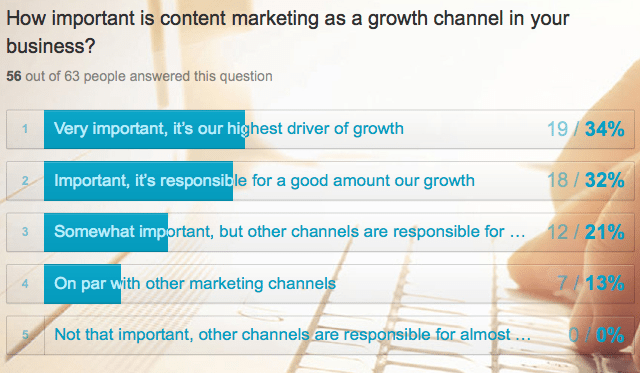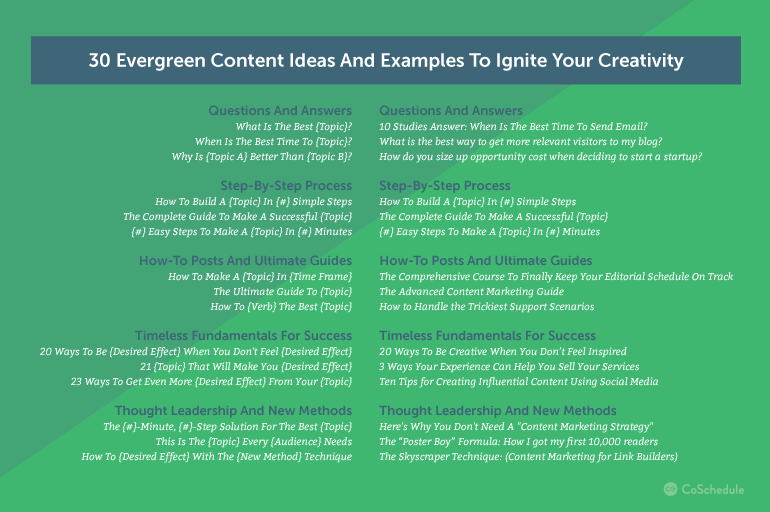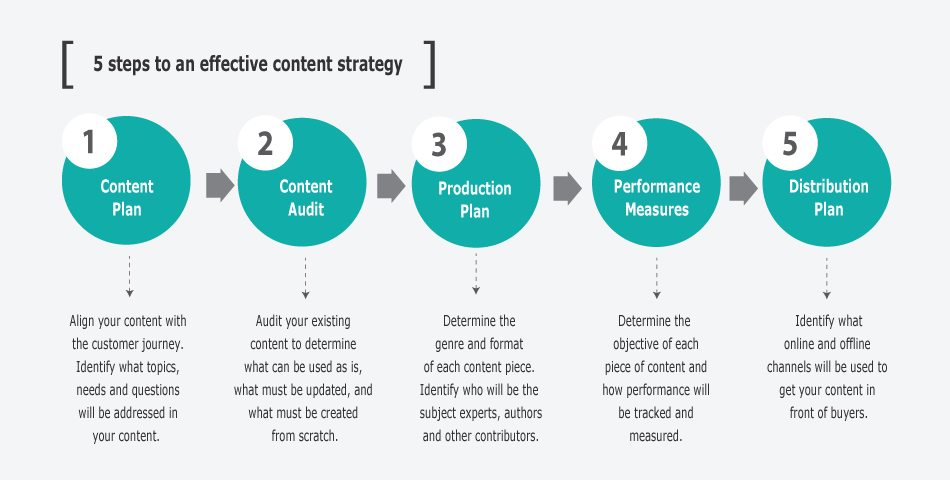Your customers cannot succeed with your product without your help. You need to let them know that your product exists, how the product will help them, how to get it and how to use it for maximum benefit. This guide can be in the form of text, pictures, video, or a combination of two or all of the above.
What is content marketing for startups? It is the creation and promotion of content that adds value to the lives of both your current and potential customers. It is both an art and science because different niches have different approaches. Most affiliate marketers need just a simple blog post to reach their audience, while a camera manufacturer will need a complete user guide with accompanying pictures and a video if possible. Live videos are also gaining ground, especially in the self-improvement and coaching industries. Medical blogs such as WebMed are increasingly using quizzes. IQ tests and other assessment tools are everywhere on the internet, not to mention e-newsletters.
Why Content is Important for Startups?

Source: WP Curve *A survey by WP Curve in 2015 showed how important content marketing was for customer acquisition in various companies.
1) One of the main goals of content marketing is search engine optimization. Content writing is always based on specific keywords, depending on what your target customers are searching for. Using the right keywords helps you to rank on the search engines so that your target audience can find you. Regardless of the scale of your business, whether it’s a small venture, a large enterprise, or even a B2B startup, content remains king. Prioritize high-quality content to attract potential clients. Crafting valuable content can be challenging, which is why partnering with a b2b content creation agency is a smart choice. They possess the expertise and knowledge needed to help your business gain the necessary traction.
2) After you start ranking on the search engines, your traffic begins to rise. High traffic means that your brand is becoming popular. Your traffic metrics can tell you where your visitors are located, their gender, interests, which pages they are visiting, how long they are staying on your page, which actions they are taking, and whether they are new or repeat visitors. This will help you to gauge the effectiveness of your content and areas that need improvements. High traffic also makes it possible for you to convert. Ultimately, conversions are a direct result of persuasive content.
3) Your content also needs to educate your visitors. Tell them who you are and why you do what you do. Give them valuable and reliable information. The more valuable your content is, the more credible you become. This will not only help build your brand but also make you an authority in that niche.
How to Get Started
Now that you know what content marketing is, you are probably wondering how you can get started. Content marketing is twofold; there is the content writing part and the content promotion.
Step #1: Create a blog
To get started with the writing, a simple blog will do. WordPress is a good platform as it makes it easy for people without an IT background to create their own customized blogs. It also comes with Yoast, an easy-to-use SEO tool, and social sharing buttons that make it easy for you to promote your content.
Step #2: Create content strategy and calendar
In order to publish frequently, you will need to create a content strategy and calendar. This will ensure that you always have interesting content to post on your blog. It will help you to create consistent content.
How to Setup and Define Content Strategy
A content strategy helps you to plan the type of content you publish, when to publish it as well as the result it should produce. The following steps are involved in the process of creating a content strategy:
a) Planning stage
Here you have to bring your resources together to ensure that you have everything set to get started. Which are the available content sources? How do you get to them and how much money have you set aside for this purpose?
b) Define the target audience
Who are you writing for? Your target audience can be defined in terms of gender, age, location, interests, income, profession, marital status, or education level. For instance, you could be targeting newlywed couples, fresh college graduates aged between 19 and 25 years, business owners aged below 40 years, aspiring property buyers, and first-time parents among others. Understanding your target audience will help you create a personalized brand experience for them.
c) Define content types and set KPIs
Your Key Performance Indicators will help you meet your goals. KPIs fall into three levels; leading, marketing, and business metrics. The leading indicators for a good content marketing campaign include more searches on specified keywords, social presence and growing network, incoming links from quality sites, as well as mentions across the web. Apart from Google Analytics, tools such as SEMRush, Moz Analytics, and Raven can help for a small fee. Marketing KPIs can be measured using Google Analytics, WebTrends, and Omniture.
You need to check the number of visitors on the site, sources of traffic, and interaction. You should also be able to check the devices used to access the content and visitor location. Conversion sources, frequency of users, and revenue trends are also measured at this level. Finally, business metrics include the cost of acquisition, visitor retention, lifetime value, and gross margin. These metrics are measured using automated tools such as Salesforce, Kissmetrics, and Mixpanel.
Don’t forget to document the process itself too, so you can showcase it in your marketing portfolio.
d) Publish and distribute
After setting your goals and defining your KPIs, you need to publish and distribute the content so as to start measuring performance. If you need help in distributing your content, you can reach out to PR agencies that are skilled at doing just that.
e) You can start analyzing the performance immediately, but after 24 hours you should be able to have clear data on what is happening
If you have implemented the strategy well, your numbers should start aligning with the goals you set. Take a week and if needed, conduct A/B tests to see what approach produces the best response. Tweak whatever needs modifications until you get the full attention of your visitors. Add whatever works to the content strategy.
Step #3: Get quality pictures

Source: Shehala @ Slideshare *Studies have shown that people retain 90% visual content as compared to 10% text content.
Your blog posts should always have accompanying images. You might not be able to take all the photos you need for each post you write, but you can use photos taken by other people. Shutterstock offers quality images at a small subscription fee. You can also find royalty-free images on Google. After opening the image search results, click on tools, then usage rights, and select as required. Sites such as Pixabay also offer royalty-free images that do not need attribution at all. Chances are, you will be using both free and paid images before you build your own multimedia gallery.
Step #4: Set up and automate your social media pages
Most of your target customers are scattered across various channels on social media, and this is why you need a Facebook fan page, Twitter business page, Instagram, and LinkedIn accounts. These will help you to promote your content on link-building platforms where you can post content to drive targeted traffic to your blog.
Pinterest, Reddit, and Tumblr are also key link-building platforms that help you to build a community of loyal visitors who eventually become regular buyers. All you need to do is connect with people who are interested in your niche and promote your content to them.
Managing these social media accounts can be hectic, yet hiring a social media manager is expensive for a startup. You can utilize various automation tools that help you to keep posting even when you are asleep! The only time you need to log in is when you want to respond to messages and inquiries sent via social media. Some of the most effective automation tools include Hootsuite, Buffer, and FP Traffic.
Step #5: Invest in email newsletter software

Source: Marketing Profs *A report from a B2B Marketers survey shows how important email newsletters are in content distribution.
Email newsletters help you to personalize content promotion. You are able to deliver content directly to your blog visitor’s inbox. This not only ensures that they do not miss any posts but also increases conversion rates. The most popularly used email newsletter tools are Aweber and MailChimp. However, MailChimp does not accept affiliate links so tracking their click-through rates can be difficult.
Step #6: Set up Google Analytics and Google AdWords
You need to install Google Analytics on your blog in order to measure your content performance and monitor the conversion funnel. You need to know how many people are visiting, their demographic features, how they get to your page, what they do after landing on your blog, and where they exit. On the other hand, a Google AdWords account will help you to conduct keyword research, analyze the keywords of your competitors, bid for keywords as well as promote your content on Google.
Step #7: Create a marketing budget
While social media offers you free link building which in turn can push up your numbers, you should set some cash aside for marketing. You will need to bid for keywords on Google Adwords if you want to beat the competition. To grow your Facebook and Twitter, you have to run marketing campaigns.
Sponsored posts on Twitter, LinkedIn, and Facebook help attract relevant people to your network. Budgeting is required for these too. Advertising is key in building brand resonance, especially when you are very new in the market. In addition, major brands have benefited from pop-up ads, pop-unders as well as propeller ads so you might want to try them.
Other Content Promotion and Distribution Strategies
In addition to the strategies discussed above, you also need to try the following:
a) On-page SEO
Writing a keyword-rich post is not enough. You need to give the entire blog a lift by using head keywords on the landing page and body keywords on the resources page. While head and body keywords are generic and broad, long-tail keywords on your posts will help you to reach the specific niche you are targeting.
b) Off-page SEO
When creating posts on various platforms, insert your niche-specific keywords to help attract the right people.
c) Create content that people would love to cite on their blogs and across the digital space since this will give you a boost on the search engine result page
Guides, tips, and life hacks are examples of citable content.
d) Activate the social sharing button on your blog to help people quickly share posts they like with their networks
This will help broaden your network as it works just like word-of-mouth. People are likely to trust brands their friends endorse faster than when you are pushing the content to them yourself.
e) Guest blogging
Find authority blogs that allow guest blogging. Usually, guest blogging gives you the opportunity to insert your by-line and pitch, which includes a link back to your site. When search engines discover inbound links from such authority sites, they will also start ranking you higher.
f) Push notifications
Activate push notifications on your blog to enable first-time visitors to continue receiving updates even when they are not browsing the site. Whenever something interesting pops up on their devices, they will always click to read, eventually boosting your real-time traffic. You can push specific products through such notifications without spamming the devices of your subscribers.
g) Conversion optimization
After attracting a couple of thousands of visitors to your blog, it is good to start thinking about conversions. With a regular flow of visitors, you can start decluttering your landing or home page to drive conversions. Include a resources tab, preferred social media profile, and popular posts on the sidebar. If you have any offers or free trials, post them here. You can also consider sending out a newsletter fully dedicated to the special offer. Remember to take every opportunity available to encourage people to sign up for the email.
Tips on Creating Evergreen Content
Every writer eventually faces writer’s block. The demand for blog content has gone up and so as a content marketer, you need to be on your feet every time.

Sources: Coschedule
Here are tips on how to create evergreen content for your startup:
a) Create your content strategy with topics to be covered
In order to avoid writing the same generic content your competitors or predecessors wrote about, you need to be creative with the content strategy. Choose topics that relate to your niche and industry, but make sure they are unique enough to spark interest in the hearts of the readers.
b) Define your format
How are you going to present your content? Is it text and a few images, a picture gallery with anchor text, an article accompanied by a picture gallery, video, or text accompanied by a video gallery? You can test several formats until you get the best one for your audience. You also need to choose an angle, because people will respect you if you have your own stance that is known by the public. Sharing your personal opinion is a great way to be discovered, especially if it doesn’t align with the rest of the industry players.
c) Make use of SEO and Webmaster tools
You need to make sure that every post you publish is crawled and indexed by Google and other Search engines. Targeted keywords make your content visible on search engines, but it takes Google several weeks to crawl a page. Use the fetch and render tool to test each individual page and if possible, generate a sitemap for the entire blog and submit it to Google. To find how many pages have been indexed, open Google.com and then type “Site: (your site URL starting with HTTP:// or HTTPS://).”
d) Aggregate content
If you run out of ideas, look for trending topics in your niche and aggregate content from other sources. You need to follow the 30 percent fair use aggregation policy or risk a legal suit for plagiarism.
e) Curate videos and infographics
Viral content is one of the fastest ways to generate traffic. Whenever you find something interesting, share it with your readers to boost your blog ranking.
f) Read widely
Reading makes a good writer, and so should you try it.
g) Monitor
Monitor the performance of your content and drop what is not working.
h) Hire an editor
Get an extra pair of eyes to go through your articles before posting. Errors destroy the credibility of your business, so you should avoid publishing unedited work. Hiring a skilled copyeditor might be one of the best decisions you make.
i) Look at what your competitors are doing and do better
Address any gaps that exist in the industry. Talk about what nobody wants to talk about and get an edge over your competitors.
j) Put a face to your stories
Have other people used your product? What was their experience? What is their advice? Mix both positive feedback and negative feedback to make it look credible, but remember to moderate it to your favor.
k) Interview industry experts
Ask industry experts to share op-eds and talk about future predictions.
l) Outsource writers
You cannot do everything on your own. Blogging is one of the roles you might have to delegate in order to focus on your core business.
m) Interact with your readers, address their concerns and thank them for reading
Building positive relationships with your readers will not only help you better understand their needs, but also boost brand loyalty. These relationships are especially important now, at a time when customers are more protective of their disposable income. Install Disqus for comment management. This tool will also help you to prevent spam as readers are required to verify their email addresses before commenting. Read other people’s work and comment too to win their goodwill. The digital space is large and you never know where your next conversion will come from.
n) Ask your audience for feedback
The goal of any content marketer is to produce content that their audience will appreciate. In order to do this effectively, it’s important to be focused while initiating the conversations we’ve just talked about. As you talk to your readers, you can find out what kind of content they enjoy. Once you know what’s working and what needs tweaking, then you’ll be able to produce more of what they enjoy.
o) Talk about your weaknesses to build authenticity
People will trust you more if you are honest.
p) Talk about your personal experience
How did you start and what did you learn along the way? People love stories that motivate them to pursue their own goals and assure them that everybody can also make it regardless of where they are.
In conclusion, content marketing is every entrepreneur’s friend. To make yourself known in the market and to actually generate a sale, you need to write. Good content will not only inform the target customer that you exist, or educate them about the product you are offering, but also persuade them to buy and keep coming back for more. Good content marketing makes it easy for the customer to make a purchase decision, and to keep using your products even after you stop talking about them.
Do you need help creating and distributing quality content for your brand? Partnering with a PR agency like Pressfarm might be just the thing you need. With a team of skilled writers and designers, Pressfarm can create winning press releases, design creative media kits, and craft engaging feature stories, all of which will help make a positive impression on your brand. In addition to creating this content, Pressfarm’s PR experts can help you develop a strategy to push it out to the right outlets.
On top of building curated media lists that include contacts across niches, Pressfarm also gives every client access to a media database of over 1 million journalists from different industries. Combined with your personalized media lists, this database is designed to help you make the right connections with influential media professionals. With Pressfarm, you can develop a PR strategy that will put your brand in the limelight where it belongs.


